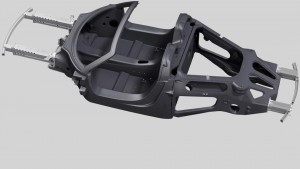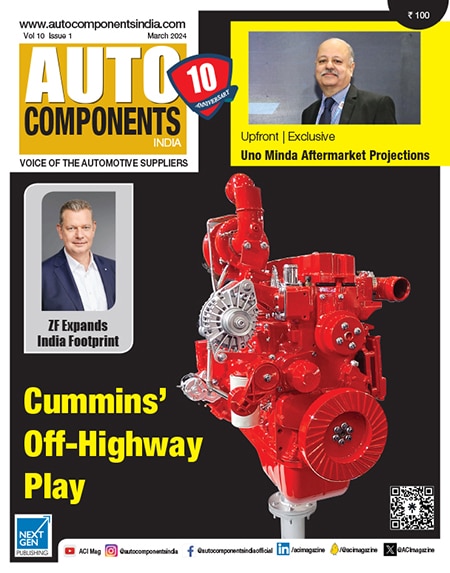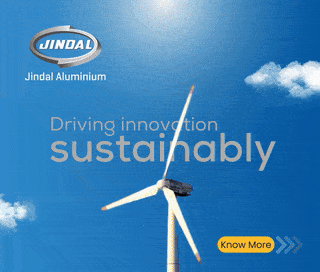Lightweighting of automotives is necessary to improve their efficiency and to reduce the carbon footprint. It is not an easy task as it involves the use of lighter and stronger materials and new technologies both by the OEMs and components suppliers. An MIT (Massachusets Institute of Technology) review on lightweighting automobiles in 1997 has drawn attention to the growing pressure on automotive manufacturers to incorporate environmental objectives into their designs, and practical ways to lightweight automotives. The review has said that the traditional method of downsising has reached its limits, and further substantial improvements would be possible only through a new approach.
Lighter and stronger
The new approach to lightweighting has been calling for the use of lighter materials and structural optimisations. With material costs and formability playing an important role, 3 approaches have been often adopted by many OEMs. These include the use of materials lighter than steel and new class of formable steel by employing equal rigidity design method; optimisation of mass reduction with materials selection and cost penalty; and a multi-objective optimisation of mass reduction and cost reduction using multi-material concept.

Porsche 918 Spyder puts a chassis on the road that is made entirely of carbon fiber and has a CFRP monocoque
In the use of light weight materials the aviation industry may lead at the moment. It is expected to be surpassed by the automotive industry shortly. The light weighting material share in an automobile is set to increase to 70% by 2030 from the current levels of 30-40%. With the development of special light weight steel grades the chances of reaching the 70% level are looking bright. Experts are pointing at the rising use of carbon fibre in automotives. They claim that carbon fibre offers the highest weight reduction potential (50% lighter than steel) though it continues to be the costliest. The rising industrialisation of carbon fibre is reducing its cost up to 50%, making it more attractive.
Lightweight packages
With the engine CO2 targets impossible to achieve after a certain threshold with driveline technologies, the significance of lightweighting is only increasing. Depending on powertrain and vehicle segment, OEMs are claimed to be willing to pay up to EUR 20 per kg. Not losing out on the 3 approaches mentioned above, under typical operating conditions, approaches seem to emerge over time.
They could well be termed as packages, the first being a conventional package with a significant share of high-strength steel, which will be used by about two-thirds of cars produced, mainly small-and medium-sized cars with conventional or hybrid powertrains.
The second package will have a higher share of lightweight materials, including aluminum, magnesium, high-strength steel, and (to a limited extent) carbon fibre. It will apply to approximately one-third of cars produced – mainly upper-medium, executive-class and battery operated electric vehicles. The third, and extreme package will include high carbon fibre share. It will be limited to niche luxury and extreme premium BEV concepts.
New approaches
The use of steel may not die in the construction of an automobile, it will however change drastically. General Motors is claimed to be at the forefront of integrating lightweight materials and innovative manufacturing techniques into its new passenger cars and trucks. Taking a multipronged approach to tackling lightweighting, the automaker is developing new assembly materials and challenging its engineering team to come up with new innovative approaches to vehicle construction.
There’s no doubt that aluminum alloy is near the top of the lightweighting list. It is the same basic material used to make commercial aircraft, and is light in weight, easy to work with, durable, and more corrosion resistant than low-carbon steel. The downside is, it costs more, requires expensive tooling, and is difficult to assemble, especially when it is being attached to another dissimilar material. Select applications are possible, and include frame rails and intricate aluminum castings. Used extensively in the C7 Corvette, aluminium alloy has also found use in Chevrolet Malibu, Cadillac CT6 and the BMW 5 Series.
Formulated to meet specific mechanical properties, high strength steel, accompanying lightweight alloys, which add strength, corrosion resistance, and sound absorbing properties, is also looked upon as a lightweighting source. Advances in spot welding technology are enabling the joining of different metals with different melting points to enable lightweighting. While fusing similar metals is a simple task, welding aluminum and steel together is difficult because aluminum melts around 1,200 degree F. while steel melts at 2,600 degree F. GM engineers have developed a welding tip that is able to accommodate aluminum-to-aluminum, steel-to-aluminum, and steel-to-steel welding. This greatly speeds up the assembly process. As an added benefit, multi-material welding eliminates the need for heavy, and costly, rivets.
The changing nature of propulsion systems – hybrid, electric and bio-fuel, is also affecting the nature of lightweighting an automobile. It is also bringing about a sea-change in the way automobiles are designed, developed and manufactured. Consider the front-end carrier (FEC) of a car for example, which supports most of the cooling package, headlights, latch and various other components. Traditional FECs are made from steel and bolted or welded to the body-in-white (BIW). A trend towards mounting the complete Front-End System (FES), as a module, onto a BIW with an open structure such that the FEC assembly connects the longitudinal rails, is not only leading to reduction in cost, but is also opening the door to the use of light weight materials like plastics.
Apart from improving the overall quality, the use of moulded plastic carriers allows integration of parts and functions with weight reduction and cost advantages. The process involves the use of glass mat technology (GMT) carriers with the addition of metal, riveted to the plastic structure.
Assessment of materials
With the willingness to invest in lightweighting activities rising, the need to assess lightweighting materials is increasingly assuming importance. With focus on substituting lighter materials such as high-strength steel (HSS), aluminium, magnesium, glass reinforced composites, and carbon fibre, the assessment of materials is bringing about some very surprising results. High Speed Steel (HSS), for example, is proving to be among the most cost-effective and the most common materials for lightweighting an automobile today. For car body and closure applications, it costs up to $2.25 per kg less. Aluminium ranges $ 3-6 per kg less, and magnesium costs $ 5-12 per kg less.
Apart from cost, each material has unique processing characteristics. HSS, for example, costs less than regular steel and is easier to form. Carbon fibre, at the other end, is very costly and difficult to turn into vehicle structural components resulting in long process qualification and significant scrap rates. In an aggressive lightweight scenario, as part of an overall material mix, carbon fibre represents a mid-to long-term opportunity.
In 2012, the new Range Rover was launched with a weight cut of 400kg, made possible by making extensive use of aluminium. Ford also pursued the same material strategy while re-designing its best-selling F-150 in 2015 and achieved a weight reduction of over 300kg. The 2015 BMW 7 Series is 130 kg lighter with the use of an advanced material-mix, including carbon fibre.
Most OEMs are yet to implement their lightweight opportunities fully. One challenge that many face is the timing. Vehicle manufacturers typically introduce substantial amounts of new lightweight materials at a new vehicle launch or during a major redesign of current platforms. This may happen every 5 to 7 years. While a clear lightweight strategy roadmap for the introduction of additional lightweight materials is necessary, it seems likely that aluminium body panels and closures will evolve into an industry-wide key lightweighting initiative. ACI














